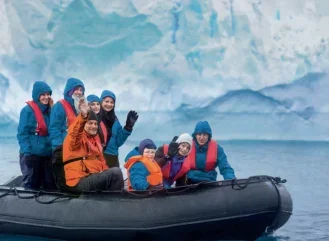
In November 1927, Louise van Evera began a remarkable journey. The daughter of Presbyterian missionaries, born and raised in China, the 12-year-old had seen little of the world, save for whitewashed churches. Leaving Shanghai by steamship, she and her parents were embarking on a grand adventure. Sailing round South East Asia and India, they continued through the Suez Canal to Europe, before finally landing in her American homeland four months later. As Louise explained in her journal, that epic timeline soon sparked boredom. Mostly separated from adult passengers, she whiled away the days playing music or scribbling postcards. One bright spot were communal balls, including dancing with a “skippy French officer” for the first time.
Vessels these days offer far more sophisticated entertainment options for Van Evera’s young successors. On many modern cruise ships, that runs the gamut from consoles and movie screenings to arts, crafts and board games to water parks and stage shows. Yet that same tension – to what extent should children be segregated from their older fellow travellers – arguably remains. That becomes particularly pointed at the luxury end of the market. Given their appeal rests on escapism, after all, can operators really offer extravagance for parents while their kids hover nearby? Then there’s the question of what to do about the youngsters themselves. To put it differently, how much effort should cruise companies put into offering top service for children – when many would equally be content with an iPad and a Coke?
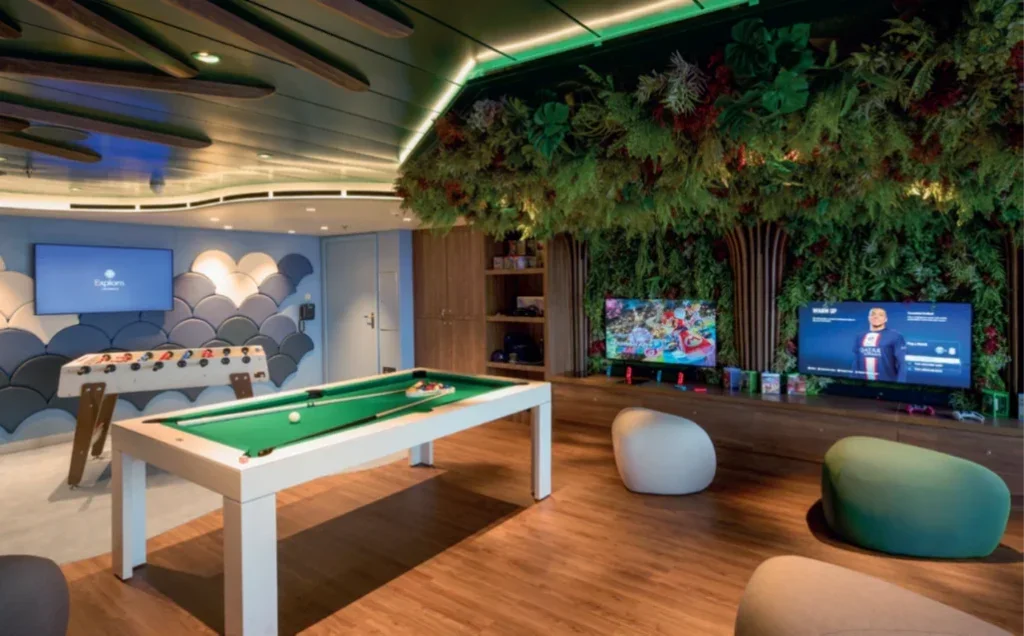
Once you factor in the financial stakes – according to one recent study, teens and younger kids made up 8% of all passengers in 2022, up from 6% in 2019 – and it’s no wonder that luxury operators across the sector are thinking carefully about these questions. Not that there’s really a single answer. From dedicated kid spaces to broader offerings that whole families can enjoy, cruise companies are experimenting with a range of youth-friendly options. With the popularity of inter-generational cruises only continuing to rise, moreover, there are plenty of signs that Van Evera’s dreary experiences really are consigned to history, even if there will always be times for the adults to be alone.
No kids allowed
Luxury cruising has typically been a child-light zone. As recently as 2018, Viking officially banned passengers under 18 from its vessels, while Virgin Voyages has integrated similar policies from its maiden voyage. Nor is this exclusivity particularly surprising. Billing themselves as oases of calm, the Silverseas and Seabourns of the world risk upsetting customers if that promise is undermined by a toddler tantrum at the neighbouring dinner table, or groups of teenagers cannonballing into the pool.
“I can attest,” says Keith Cox, VP of entertainment at Crystal Cruises, “that historically, luxury cruises have primarily catered to an adult clientele seeking refined experiences and tranquil environments.” Koray Savas, the hotel VP at Explora Journeys, makes a similar point. Though his own employer has a rather more relaxed policy towards children, Savas concedes that not every rival has traditionally stressed their “suitability” for children.
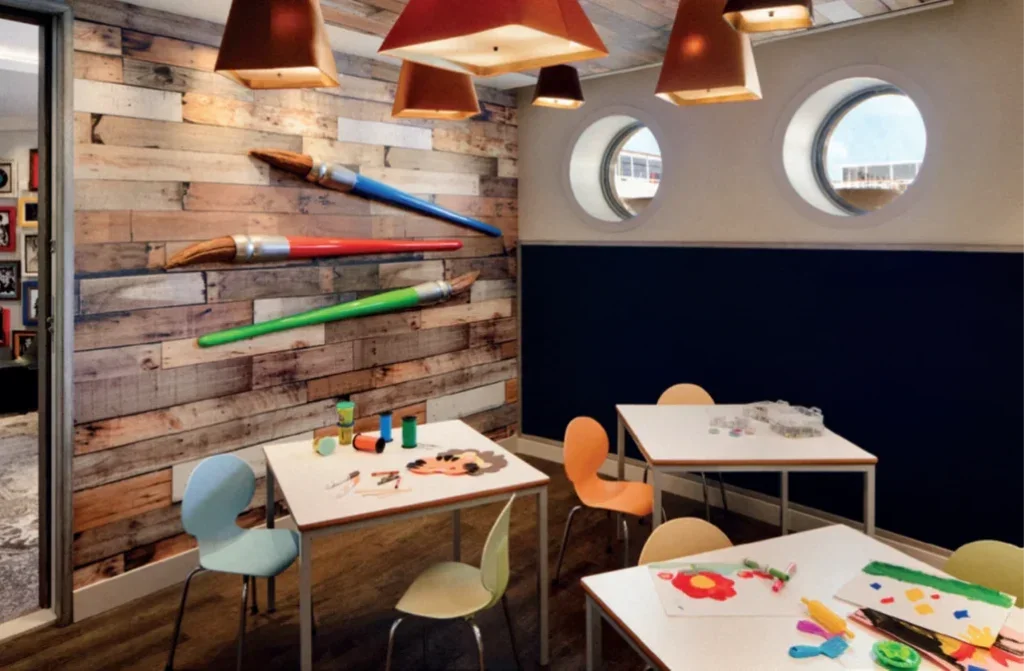
Now, though, things are changing. Quite aside from the headline rise in youngsters climbing up gangways, that’s clear elsewhere too. According to CLIA, for instance, 73% of cruisers are now sailing in multigenerational groups. And though that could include older parents, other statistics suggest that the real growth is coming from below.
In 1999, a mere 15,000 British children embarked on a cruise. A decade later, the figure had risen to 105,000. And if that hints at broader cultural changes – cruising is no longer just for retirees – Savas suggests that more recent events have really pushed kids to the forefront. “The pandemic,” he says, “was the epitome of a shift in what quality family time means,” adding that as people become more geographically dispersed, ocean journeys with offspring become especially valuable.
Given these trends, no wonder cruise companies are jostling to parade their child-centric policies. That’s apparent even for top-end operators. Last May, for instance, Explora unveiled a ‘dedicated programme’ for multigenerational passengers, encompassing interconnected suites and free travel for under-18s, among other perks.
Hapag-Lloyd Cruises, for its part, offers similar services. As Julian Pfitzner, the operator’s CEO, explains of Europa 2: “There are seven apartments especially for families, which consist of two suites connected by a shared veranda and a connecting door. Both suites each have a 20m2 living area. The ‘children’s room’ has a double Pullman bed, a separate children’s bathroom and plenty of space to play.”
Give us a Wave
Imagine you’re a young person aboard Crystal Serenity, a 250m vessel recently refurbished for guests. Your parents have insisted you occupy yourself for a few hours – what can you expect? In the first place, you’ll probably wander over to Waves. Offering what Cox calls “supervised activities and games”, it’s specifically designed for teenagers.
Together with Fantasia, a related area for younger passengers, in practice these spaces offer practically everything a kid could want. There are painting sets and televisions and books, all ensconced in a friendly, beanbag-heavy space. Nor are Cox and his colleagues alone. In fact, it’s striking to what extent other operators have embraced a similar model to Crystal. At Explora, for example, the Nautilus Club offers video games and a pool table, flanked by comfy seats and manicured plants. At Hapag-Lloyd, the Kids Club boasts a theatre and climbing wall, while the Teens Club, for their older siblings, has table tennis.
Despite all these diversions, it’d be wrong to imagine kids are left to make their own entertainment. Right across the luxury cruise sector, educational fun is a major theme, notably at Explora where children are offered lectures from marine biologists or astronauts. Unsurprisingly in our safety-conscious age, supervision is also important for security reasons. “At Crystal,” stresses Cox, “ensuring the safety of children in our youth programmes is paramount. Our highly qualified staff undergo training in child safety, CPR and first aid, ensuring they can handle any situation. All activities are supervised, and our dedicated spaces are designed with safety in mind.” Pfitzner obviously has similar worries. “The safety on board our ships for guests and crew is always the top priority,” he stresses, adding that architectural features like lockable balcony doors are also designed to put parents at ease.
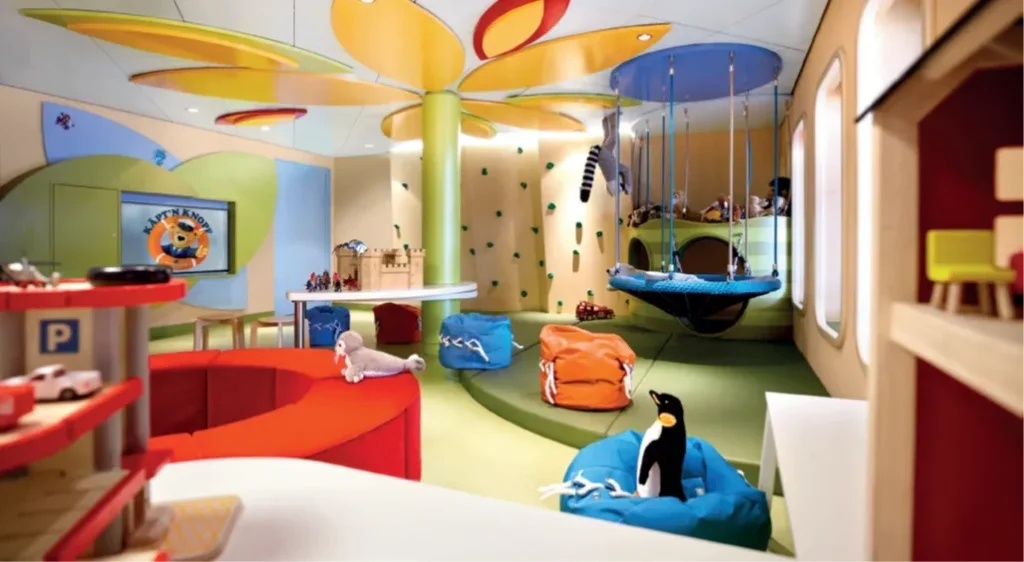
You can spot similar thoughtfulness in other areas. Presumably conscious that they’re offering a luxury experience, Savas says his team prides itself on the “little touches” of sophistication for younger guests; for instance, in the age-appropriate toys for babies, or the child-sized bathrobes offered in suites. Other activities are tailored to children too. A good example here is Hapag-Lloyd, which offers massages to kids as young as eight, as well as group dinners complete with childminders and simplified menus.
Child-light wonder

All the same, there are limits to how much child passengers can mimic their adult relatives. Indeed, schemes like Waves and Nautilus partly feel designed to give parents a break and maintain a sense of segregated glamour at sea. Certainly, that’s the impression you get talking to Cox, who emphasises that his company is famous for its “refined offerings” to adult travellers. No wonder, therefore, that some Explora activities are for adults alone. That’s true, for instance, at the Helios Pool and Bar on Explora I, promising the ‘ultimate chill out lounge experience’ free from pint-sized distractions. It’s a similar story at Hapag-Lloyd, which generally limits the number of children allowed aboard its ships.
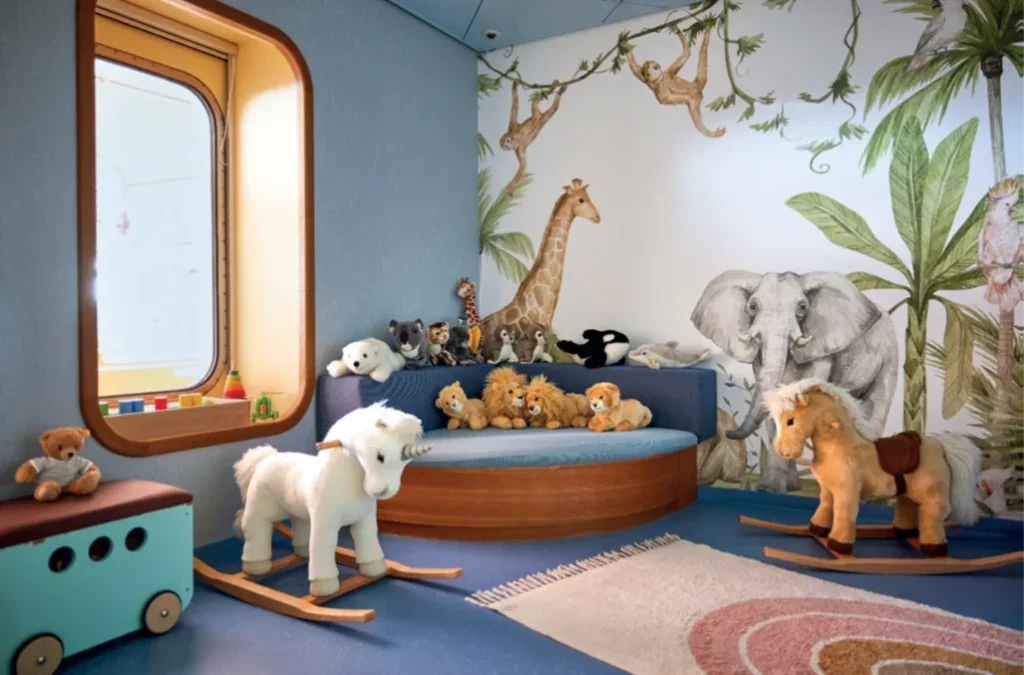
73%
The percentage of cruisers that are now sailing in multigenerational groups.
CLIA
If, therefore, children are amply catered for across luxury cruise lines, operators seem conscious that divisions remain vital. And as the sector becomes more welcoming to youngsters, operators will doubtless be just as conscious to give adults some space. “At Crystal,” reiterates Cox, “we believe in creating an environment where guests of all ages can feel welcome and enjoy their time aboard our ships. While we maintain the highest standards of service and refinement, we also offer carefully curated family-friendly amenities and activities on select sailings to accommodate younger guests.” It certainly beats postcards and dances, even with skippy French officers.






